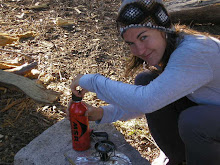Matanza entre Hermanos


On Friday October 6, 2006, Bolivia awoke to the news that miners were being killed in Huanuni, the site of Cerro Posokoni, which contains the richest tin reserves in the world. This time it wasn't the government or the military doing the killing as it usually has been in the past; rather, miners were killing each other. The pictured poster in Cochabamba's plaza central explained, "The events in Huanuni are the legacy of the politics of privatization and 'relocalization' in the mines carried out by the neoliberal governments...that closed the COMIBOL [state-owned mining company] mines and increased unemployment. Today in Huanuni we see the consequences: a 'fight among the poor' (state-employed miners vs. cooperative miners) for sources of work and areas to mine." Sixteen miners were killed, more than 200 were wounded. Familes were left without fathers, without breadwinners. The results of pitting poor against poor, brothers against brothers, were clear for Bolivia and the world to see. The tents pictured above are where the military was camping out around the outskirts of Huanuni to keep the peace a week later when I went through. The minister of mining, who despite being appointed by Morales had continued to promote the privatization and "cooperativization" of the mining section, was forced to resign and the Morales government promised that nationalization of the mining sector would be next on its list in 2007. These events moved me to redesign my research project such that I would study the massive "relocalization" of Bolivia's miners in the mid to late 1980s , when more than 25,000 miners were fired and displaced from the socavones de angustia, the tunnels of anguish.
Here's a link to an excellent article explaining the roots of the showdown.
http://www.counterpunch.org/howard10112006.html
See also an article I wrote at the time:
http://www.socialistworker.org/2006-2/607/607_06_Bolivia.shtml


0 Comments:
Post a Comment
<< Home